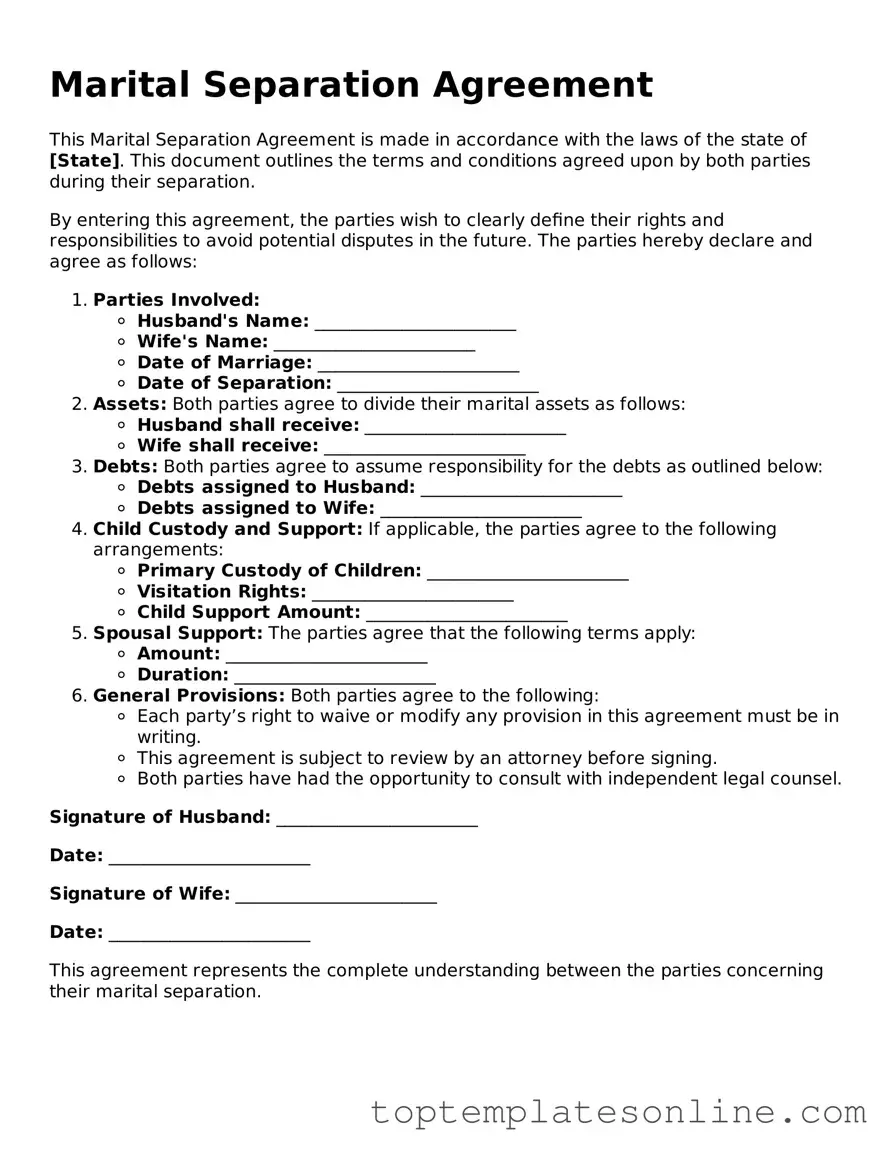Attorney-Approved Marital Separation Agreement Form
A Marital Separation Agreement is a legal document that outlines the terms and conditions agreed upon by spouses who decide to live separately while remaining legally married. This agreement typically addresses issues such as asset division, child custody, and financial responsibilities. By clearly defining these aspects, the agreement aims to provide clarity and reduce conflict during a challenging time.
Customize Marital Separation Agreement Here
